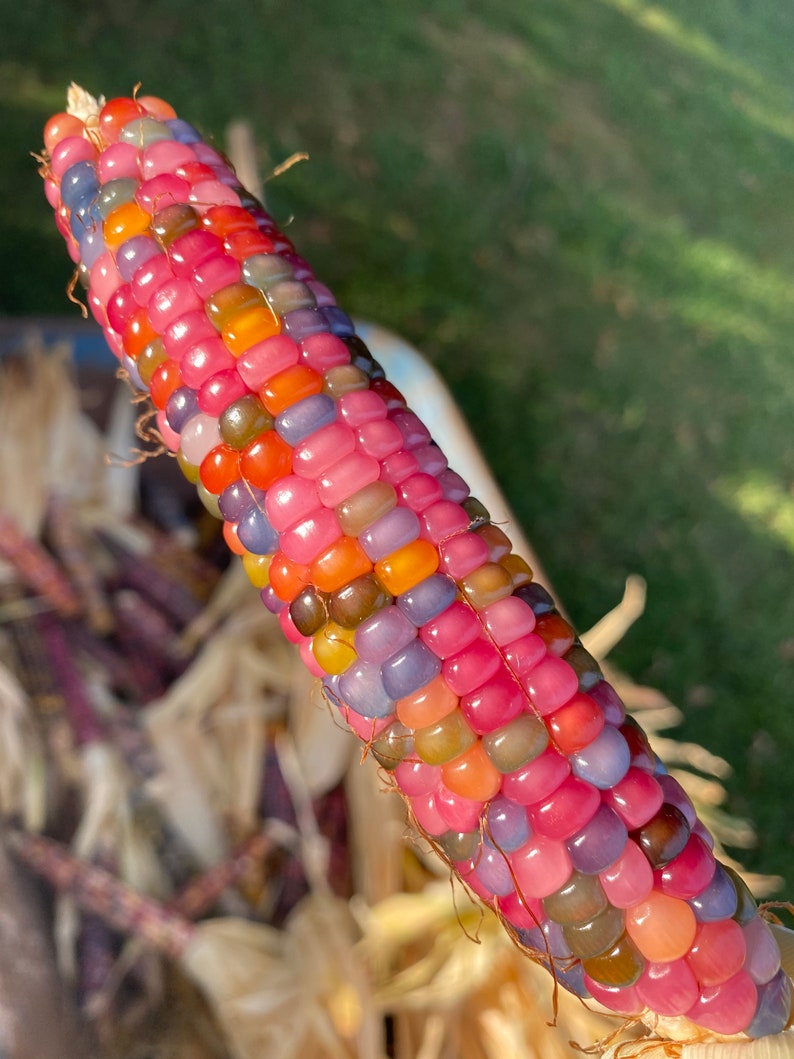
Indian Corn - if we can still call it that without being too offensive, has always held my attention as we enter this season of Thanks and Bountiful Harvest. As children we would create our finger-paint hand turkeys and draw cornucopias filled with field crops. I don't know if younger generations have any clue as to what a cornucopia would be?
But the bright colored Indian Corn was always a staple for a door entry or adding to a centerpiece on the table. Certainly because of its beauty, but also because it was one of the last crops remaining in fields.
I decided to do some agricultural research and found that corn goes back some 10,000 years and came from a mutation of field grasses in Mexico. What we normally eat is called Sweet Corn because of the thin shell on kernels and the build up of sugars and starches. Field Corn is a variety called Dent Corn because the kernels get an indentation as they ripen and harden. The colored Indian Corn is a 3rd type called Flint Corn. This is due to the the shell being much harder than the other two which makes it the last to be harvested; thus named after a hard flint stone. It is edible, even if very hard on the teeth getting through that shell. It is more often used in polenta and hominy grits. And of course the blue corn chips that are so popular.
Genetic breeding over a century have morphed them into the rainbow of shades we now celebrate. They started with whites and umber reds, but have now resulted in a spectrum of shades. A personal favorite is one called Glass Gem Cherokee - that looks exactly like shards of sea glass in bright jewel tones. It came from a grower named Carl Barnes, an Oklahoma farmer who was trying to reconnect with his Native American roots. It is almost a Jack in the Beanstalk tale of him meeting up with other gardeners in his area and passing off seeds. One exchange was with a fellow farmer Greg Schoen from New Mexico. Over a course of some 20 years, the two kept planting individual seeds from selected ears in the brightest of colors until Barnes came up with his patented Glass Gem strain. It is now available for seed purchase since 2016 and can be bought in a variety pack or specific color tones. I find it lovely.



Just before it colors the blackbirds eat it all
ReplyDelete